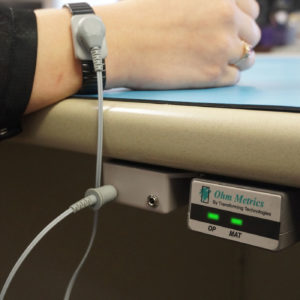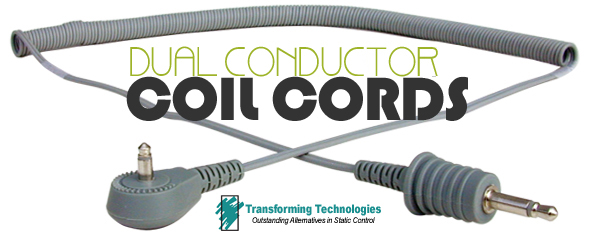How does an ESD constant monitor work?
March 4, 2013
Reliable performance of ESD matting and ESD wrist straps is critical for your product’s integrity and reliability. But the hand testing and  hand logging of wrist straps and tabletop material performance that is required is a cumbersome, labor-intensive paperwork nightmare. Use of our ESD wrist strap and ESD bench mat monitors continuously verifies the effectiveness of your ESD protected workstation, simultaneously satisfies ISO logging requirements and insures outstanding product quality.
hand logging of wrist straps and tabletop material performance that is required is a cumbersome, labor-intensive paperwork nightmare. Use of our ESD wrist strap and ESD bench mat monitors continuously verifies the effectiveness of your ESD protected workstation, simultaneously satisfies ISO logging requirements and insures outstanding product quality.
Operators plug their ESD coil cord into the grounding jack of the constant monitor right at their workstation. The constant monitor grounds the wrist strap and simultaneously monitors for faults in the ground path from the strap to the earth ground, including proper contact with the operators skin. A proper working ground path results in the LED on the constant monitor to glow green (indicating GOOD). If a fault is detected, the LED will blink red (indicating FAULT), and the unit will repeatedly beep.
Types of Constant Monitors
Capacitance (or single wire) constant monitors
This type of monitor is simplest and most cost-effective constant monitor. When a person is wearing the single wire wrist strap the monitor detects the person and puts the monitor in the unalarmed state. The monitor circuit detects a person (a conductive object) and its relationship to ground (another conductive object). View our Capacitance Monitors.
Impedance (or single wire) constant monitors
The impedance monitor uses a detection circuit designed to reduce false alarms and eliminate adjustments. It uses the phase difference between current and voltage to detect changes in impedance of the cord, band and person. A very low AC voltage is used for constant sensing. Any standard wristband and coiled cord can be used.
Resistance (or Dual Wire) constant monitors
This type of monitor is used with a two wire (dual conductor) wrist strap. When a person is wearing a wrist strap, the monitor observes the resistance of the loop, consisting of a wire, a person, a wristband, and a second wire. If any part of the loop should open (become disconnected or have out of limit resistance), the circuit will go into the alarm state. An important feature of the Dual Wire Wrist Strap is that even if one conductor is severed, the operator has reliable path-to-ground with other wire. View our Resistance Monitors.

